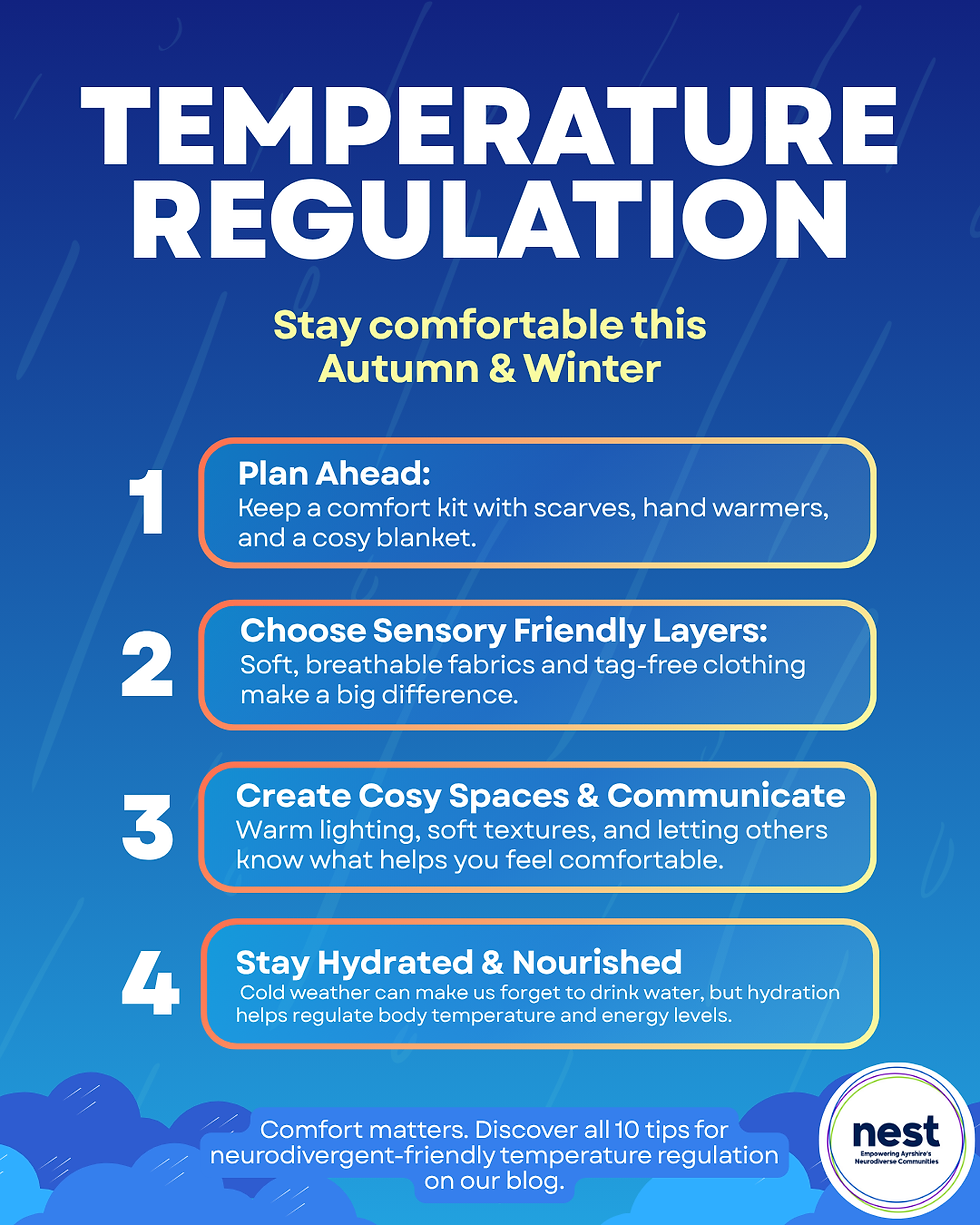Why a Morning Routine Can Change Everything - Especially for Neurodivergent Individuals 🌅
- Celine Dyer

- Aug 8
- 3 min read
Mornings Can Be Hard...And That’s Okay ☕
For many neurodivergent people, mornings can feel chaotic, rushed, and full of unexpected hurdles. Whether it’s difficulties with sleep, transitions, sensory sensitivity, or executive functioning challenges, getting up and out the door isn’t always simple.
But creating a morning routine, even a flexible or non-traditional one, can help turn the tide. Routines aren’t about perfection. They’re about reducing uncertainty, creating structure, and building habits that work with your brain, not against it.
Why Morning Routines Help Neurodivergent Individuals 💡
Here’s what a good routine can support:
Executive Functioning: A predictable structure helps reduce decision fatigue and forgetfulness, especially when working memory or planning skills are affected. 🧠
Emotional Regulation: When mornings feel calmer and more predictable, the whole day is less likely to spiral into overwhelm. 📅
Sense of Accomplishment: Even ticking off one or two small tasks can set a positive tone for the day.🎯
Transitions: Routine helps ease the transition from sleep to wakefulness, a process that can be particularly challenging for neurodivergent individuals. 🔄
Sleep-Wake Cycle Support: Maintaining a regular morning rhythm helps regulate the body clock, especially when sleep challenges or irregular schedules are present. 💤
How to Build a Neurodivergent-Friendly Morning Routine 🛠️
Not everyone wants or needs a 6 am yoga class. This is about your needs, energy levels, and pace.
Step 1: Start with What’s Working 📝
Before adding anything new, ask:
What already helps me get out of bed?
Are there parts of my morning I enjoy?
What feels manageable right now?
Use these as anchors to build on.
Step 2: Choose 3–5 Key Tasks ⏳
Less is more. Focus on essentials that help you feel prepared or regulated.
Examples:
Brushing teeth 🪥
Having a protein-rich breakfast 🍳
Taking medication 💊
Putting on noise-cancelling headphones 🎧
Checking your planner or visual schedule 📋
You can build around needs, not expectations.
Step 3: Visual or Written Prompts 📷
Create a visual routine board, checklist, or phone reminder system.
This helps offload the mental load and reduces anxiety about what’s next.
Try:
Picture cards or printed visuals 🖼️
Colour-coded sticky notes 🗃️
A digital checklist with timers or alerts (using emojis can add a visual prompt) ✅
This is especially helpful for neurodivergent individuals or those with executive functioning challenges.
Step 4: Build in Regulation 🧺
Include something that supports your nervous system, even if it’s just two minutes.
Try:
Rocking or stretching
Breathing exercise or calming app
Fidget or stim toy time
The goal is to start regulated, not stressed.
Step 5: Add Flexibility 🌊
Rigid routines can backfire. Neurodivergent-friendly routines need space for change.
Use “option A / B” choices (e.g., cereal or toast)
Time blocks instead of specific times (e.g., “Between 8-9 I get ready” or "after I eat breakfast I brush my teeth)
Skip days are allowed! It’s about support, not punishment.
Step 6: Celebrate Success - Big or Small 🎉
If you brushed your teeth today and that’s all you managed, that’s still a win.
Celebrate using:
Verbal affirmations 💬
Stickers or trackers ✅
A reward system (yes, adults can use these too!) 🏆
Sharing your success with someone safe 👯
Final Thoughts 💬
Morning routines don’t have to be perfect, strict, or complicated to be effective. For neurodivergent individuals, they’re not about productivity; they’re about creating comfort, predictability, and support for your unique brain.
At NEST, we understand that neurodivergence shows up differently for everyone. And we know that a kind, flexible, and personalised approach makes all the difference.
Whether your morning routine starts at 6 am or noon, it’s still valid. Start where you are, and build what works for you.








Comments